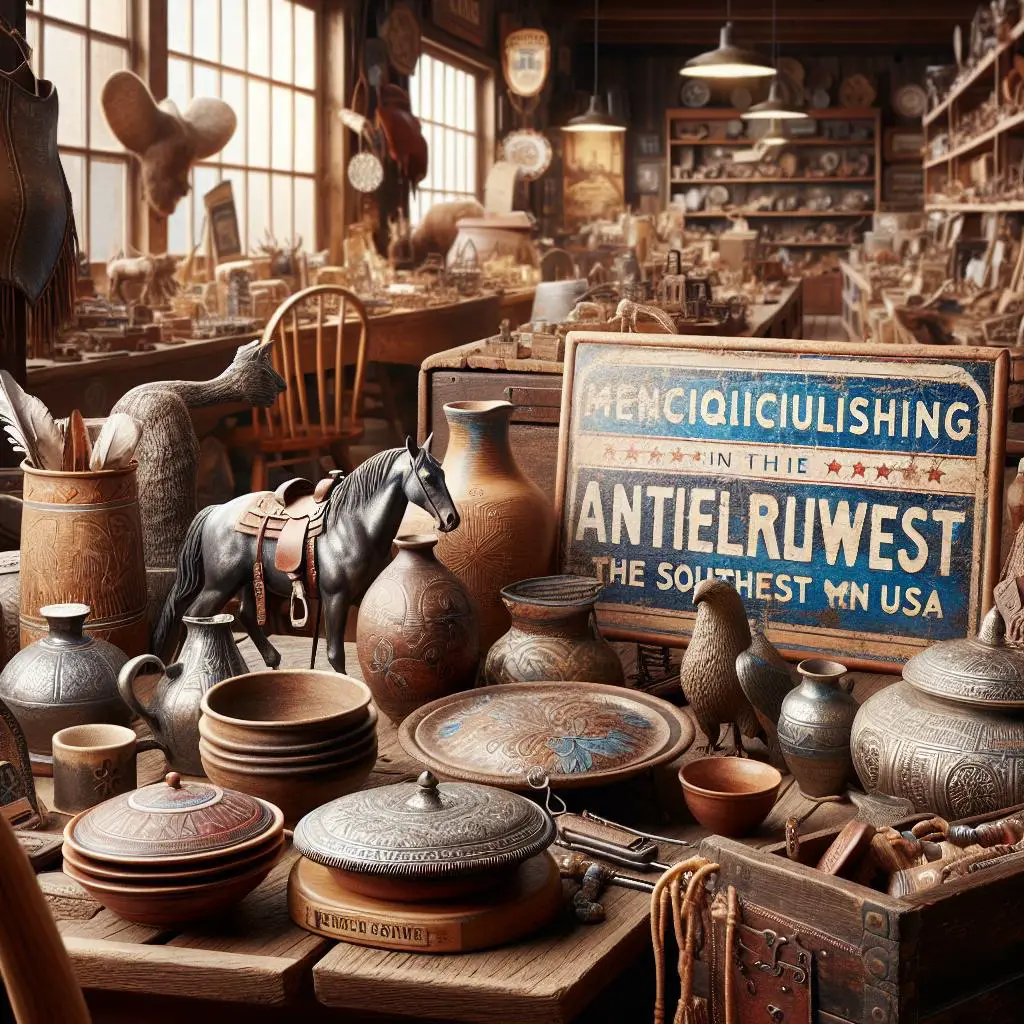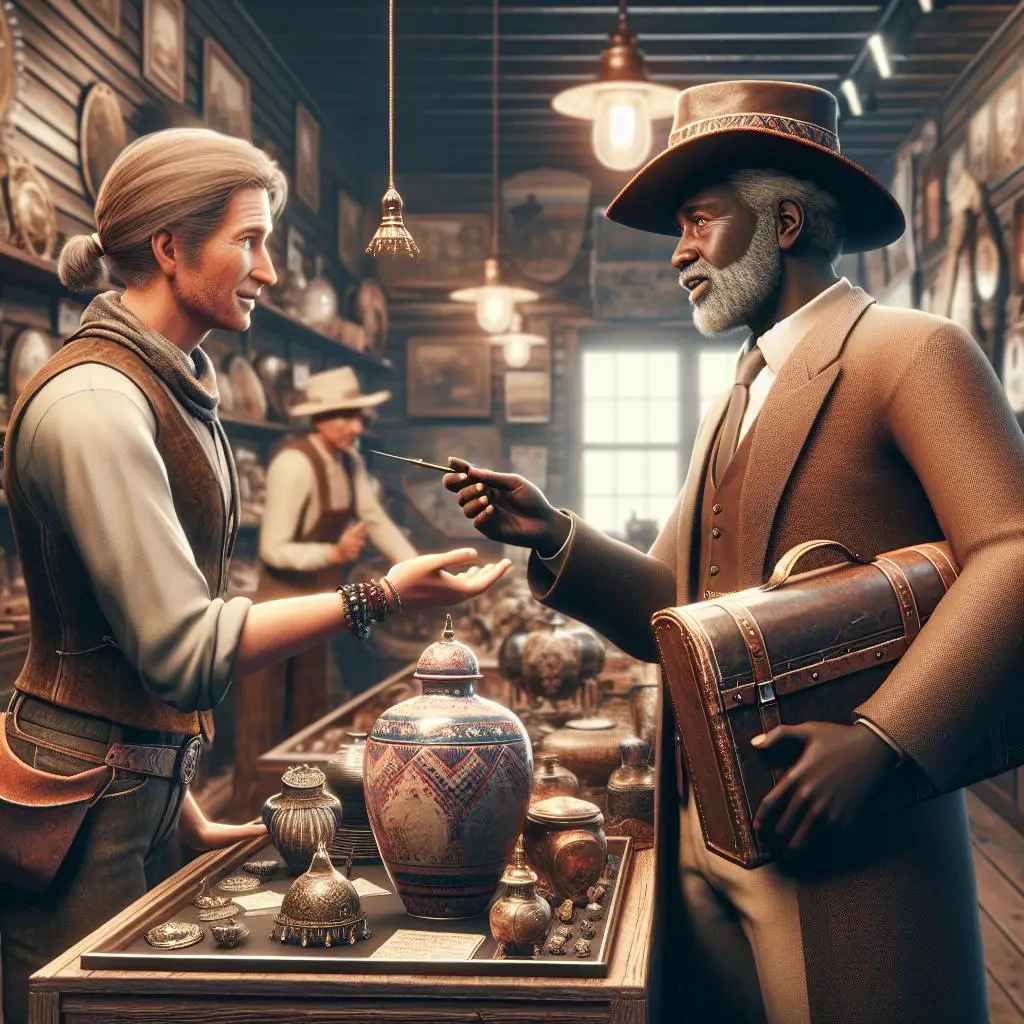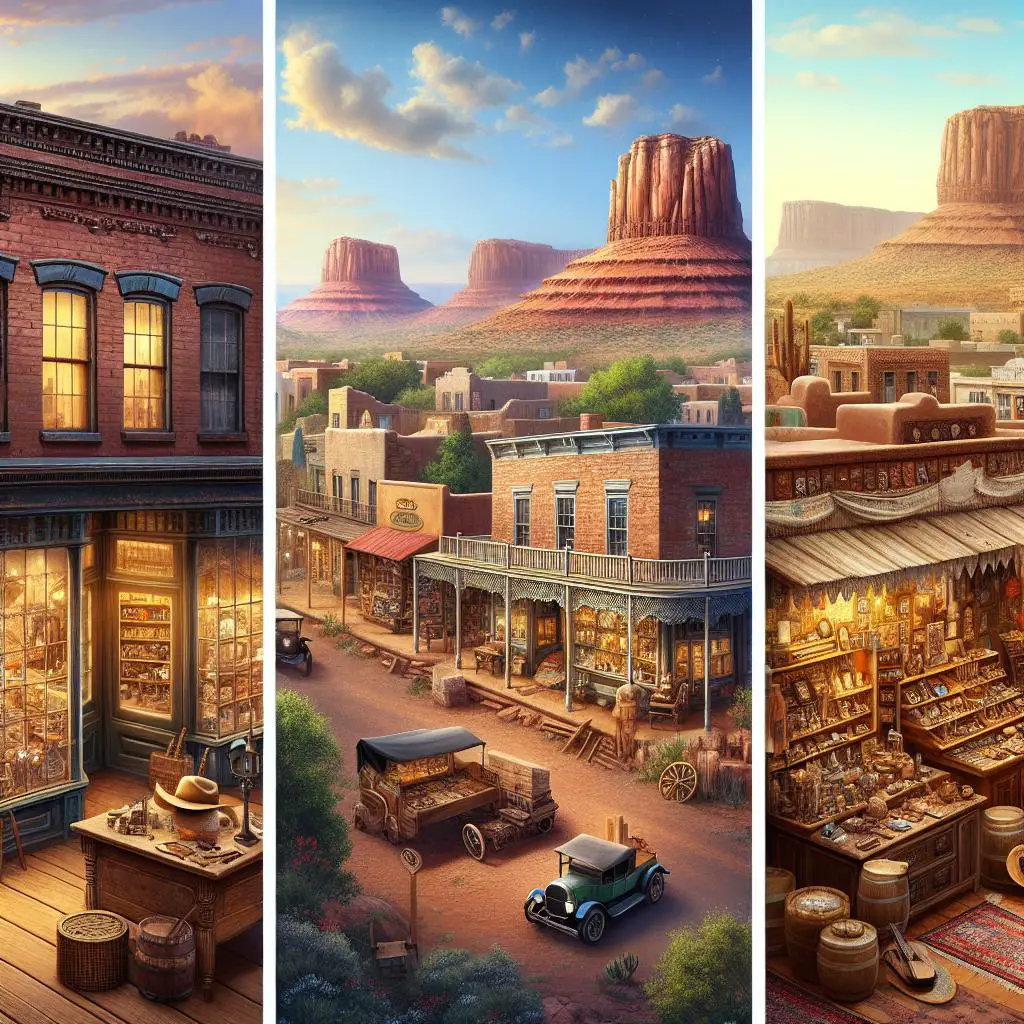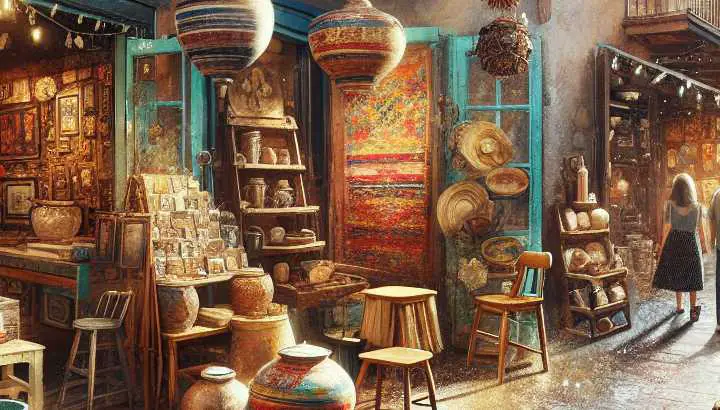Navigating the Antique Shops of the Southwest

1. Identifying genuine antiques in Southwest shops
The Southwest shop scene is similar to hunting in an untamed Wild West – a silver-tongued shopkeeper outfitted in vintage boots, the intoxicating smell of old leather, a cacophony of haggling, and treasures that can make any antique loyalist’s heart race. But how does one tell a genuine antique from a counterfeit? Well buckle up, partner, because we’re about to hop onto the chuck wagon of antique identification.
Tip 1: Prepare For Adventure
In the Southwest, antiquing is not for the faint-hearted. Have you ever watched Indiana Jones? Yes? Great, because affirming whether something is a genuine antique piece or an imitation is more of an adventure than a shopping spree. So, wear your metaphorical adventurer’s hat, wing-tipped alligator-skin cowboy boots, and get ready for a dash of the Wild Wild West!
Tip 2: Play Detective
When examining a potential antique, you should feel like Sherlock Holmes examining an intriguing evidence. Fun fact: antiques often bear witness to their own history – they carry more marks, scratches, and patina than an old gunslinger. While some counterfeits go through a process called ‘distressing’, which can replicate aging, a keen eye will distinguish artificial distress from natural wear and tear. So, dust off that magnifying glass because becoming an amateur detective is part of the journey.
Tip 3: Check for SAW – Signs of Modern Work
We are talking anachronistic screw types, too-perfect stamping, synthetic varnish – any trace of time-traveling hardware that doesn’t match the era of your alleged antique. Antiques should not reveal mitre joints, plywood, or particleboard. If you find those, the piece is probably post-World War II. The only exception might be if you find a time-traveling DeLorean parked nearby.
Tip 4: Authenticity in the Aura – Trust your Intuition
This is where decades of yoga, meditation, and your recently acquired third-eye chakra come in handy. Since the most important characteristic of an antique is its age, authenticity often radiates from a genuine piece. While it’s subjective and somewhat mystical, antique enthusiasts agree that a certain energy, a vibe, a distinctive aura, sets antiques apart from their counterfeits. If it feels too new, it probably is.
“Donatello was also a great friend of Cosimo’s, modelled many things for him, and inspired Cosimo with a taste for collecting antiques”
~ Henry Dwight Sedgwick, Italy
Tip 5: Asking the Right Questions
Strike up a conversation with the shop owner. Remember, in the Southwest, folks are as warm as the mid-day sun and as friendly as can be. Ask about the item’s provenance – where it came from, who owned it, its age, and the story behind it. If the shopkeeper seems evasive or their story has more plot holes than a badly written dime-novel, they might be pulling the wool over your eyes.
Tip 6: When in Doubt, Get a Second Opinion
Sherlock Holmes had Dr. Watson, and you should have your reliable sidekick too. Seek a second opinion from experts or experienced antique dealers. A genuine dealer in the Southwest is generally as honest as Abe Lincoln — they would rather lose a sale than sell you a counterfeit.
We’re all done, and it’s time to mosey on out, cowboy. The Southwest antique market is as thrilling as a rodeo and as promising as a gold mine. Remember, if you keep a sharp eye and trust your instincts, you’ll be able to spot the genuine antiques from the mere faux-old trinkets. Now go out there, enjoy the journey, and maybe you’ll find a gem that whispers tales of the Wild West right into your heart. Happy hunting, partner!
Source: 1. Identifying Genuine Antiques In Southwest Shops

2. Tips for bargaining and negotiating antique prices
Title: 2. The Delicate Art of Bargaining and Finagling for Antiques
Who doesn’t love a good game of haggling, right? Indeed! Especially when it comes to the exciting realm of antique prices, where every object tells its own chronicle of history whispered through the echoes of time. The chase, the alluring dance of you and the seller, is exhilarating. And when it comes to bargaining and negotiating antique prices, here are some hot tips to transform you into a master negotiator, a virtuoso of haggling, a maestro who can finger-waltz two digits off a price tag with as much ease as sipping a well-aged merlot.
1. Do Your Homework:
The world of antiques is a rabbit hole deeper and more mysterious than Alice’s adventures in Wonderland. A seemingly innocuous and battered teapot might carry a price tag as hefty as your monthly mortgage payment, leaving you slightly nonplussed, to say the least. So, bone up on your knowledge. Read books, find a mentor, watch Antique Roadshows which is better than any weeknight soap opera, and indulge in internet goblin-hood. C’mon, you already are a night-owl Googler aren’t you? The more you arm yourself with knowledge, the more potent your bargaining powers will be.
2. Bring the Charm On:
Yes, you’ve done your detective work and you’re ready to fight it out for the best price on that 19th-century Bavarian cuckoo clock that you’ve been pining for. But remember, nobody likes a hardnose. So, wear your best smile, crank up the charm and create a sparkle of rapport with the seller. It’s a bit like sharing a waltz; take the steps gently, without stepping on any toes. The goal is to make your seller willing and even eager to give you a better deal.
3.
“She knew that chivalry was not a virtue of that land where bargaining is at its best, and that where her Italian saw a gate open he would reasonably go in”
~ Maurice Hewlett, The Queen’s Quair
The Magical Power of Silence:
When the dealer throws a price at you, resist the urge to jump on it. Pause, look thoughtful, maybe a tad puzzled. Deploy the power of silence, let it hang in the air, thicker than cream on a scone. Often, the seller will break this uncomfortable silence by sweetening the deal themselves. It’s a mind trick that’s as old as haggling itself, and it works more often than you’d think.
4. The Artful ‘Walk Away’:
Ah, the dramatic ‘walk away’, a classic move in the haggling playbook. Here’s how it works: If you don’t get your desired price, graciously thank the dealer for their time and walk towards the exit with the ease of a catwalk model. It’s unbelievable how often anxious sellers will call you back and lower the price to seal the deal.
5. Cut a Fair Deal:
While it’s exciting to drive a hard bargain, remember that the vendor is running a business, not a charity. Be appreciative of their need to keep the lights on and the metaphorical wolves at bay. Be a smart buyer, not a stingy one.
So there you have it, friends; embracing these tips can turn the exciting waltz of antique bargaining into an winsome experience that’s both enthralling and rewarding. As you stride into the heart of the bazaar decked out with golden age trinkets, remember, you’re not just buying antiques, you’re haggling for a fragment of history. So saddle up, adjust your monocle, and let the beautiful dance of haggling begin! Trust me, you’ll be twirling that price tag to your tune in no time.
Enjoyed This? Here’s More: 2. Tips For Bargaining And Negotiating Antique Prices

3. Southwest cities known for unique antique collections
Title: High Noon on the Antique Trail: Southwest Cities with Unique Antique Collections
As rugged as a John Wayne boot and as delightful as a sun-soaked siesta, the Southwest offers a different kind of treasure trail woven through its popular urban landscapes. Rather than gold and gems, this trail offers something a little more… eclectic. Antiques, darling! And boy, do these southwestern cities know how to strut their stuff.
First up on our roundup, Santa Fe, New Mexico. Who knew that the land renowned for its fiery sunsets, adobe buildings, and chile peppers was also a hotspot for antique hunters worldwide? Some claim that Santa Fe’s love for antique collecting harkens back to the days of old where adventurers and explorers would trade and barter. Today, Santa Fe’s Canyon Road, with its densest concentration of galleries, is chock full of mesmerizing antique pieces. From enchanting Spanish Colonial art to Indigenous crafted pottery, this city manages to spin old tales in new ways through the allure of antiques!
Time to rein in the horses and head farther south to Round Top, Texas. This city owns the limelight twice a year with its antique fair. Known as the hotspot for “Marburger Farm Antique Show,” this event houses over 350 dealers who welcome around 10,000 visitors each year. Here’s where forgotten chaises lounge alongside Victorian-era curios; rusty wrought-iron garden pieces compete for attention with Art Deco lamps and where every antique seemingly cries out, “Give me a home where the buffalo…er…
“As a result of this, the collections were begun in another part of the division instead of, as was usual, in Bambata’s ward”
~ Unknown, Unknown
antique collectors roam!” Part of the charm here is the raucous blend of debris and décor, trash and treasure that lends a particular, Round Top je ne sais quoi.
Finally, pull in on your stagecoach to Scottsdale, Arizona. As if the city heard, “antiques at high noon,” and took it a little too literally! With boasting streets like Main Street, Marshal Way, and Bischoff Avenue, wedged full with antique stores, it seems like the city’s past echoes its future in iron, wood, and occasionally in 14-carat gold. Old Town’s Historic District gives off vibes that would make even Indiana Jones green with envy. Spanish colonial furniture, oil paintings from the bygone era, and Native American jewelry; good luck trying to leave empty-handed.
There you have it, the mystical trifecta of the Southwest antique scene: Santa Fe, Round Top, and Scottsdale; cities as unique and distinctive as the collectibles they house. Remember, exploring these cities isn’t about finding a Tudor chair from the 17th Century. It’s the chutzpah to embrace the historical narrative each antiquity shares, the whimsical whispers of the past that echo as one traipses through these odd corners of America’s Southwest. So, trade in those cowboy boots for a comfortable pair of walking shoes—but keep the hat, you’ll look positively rakish—and embark on your own antique adventuring. Happy antiquing, partners!
Read More: 3. Southwest Cities Known For Unique Antique Collections
